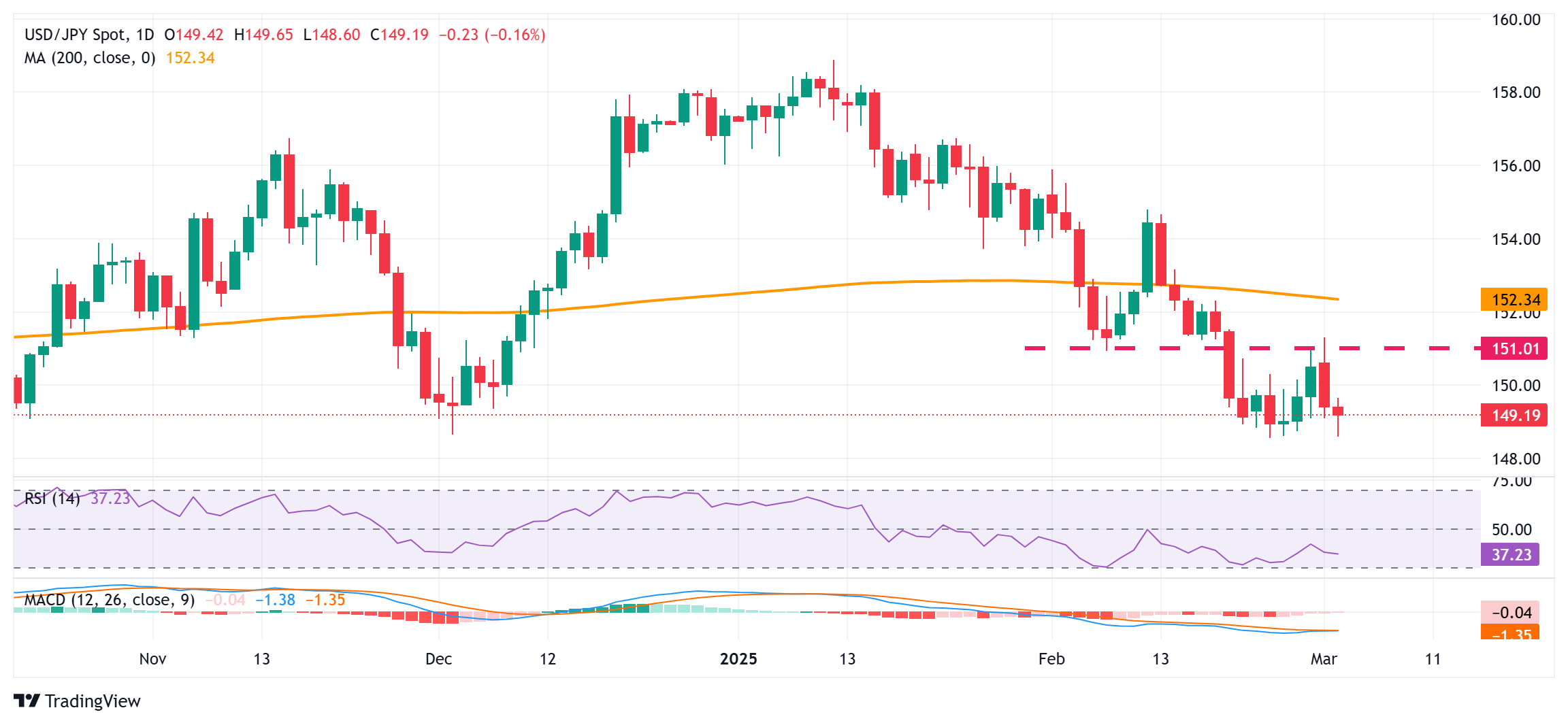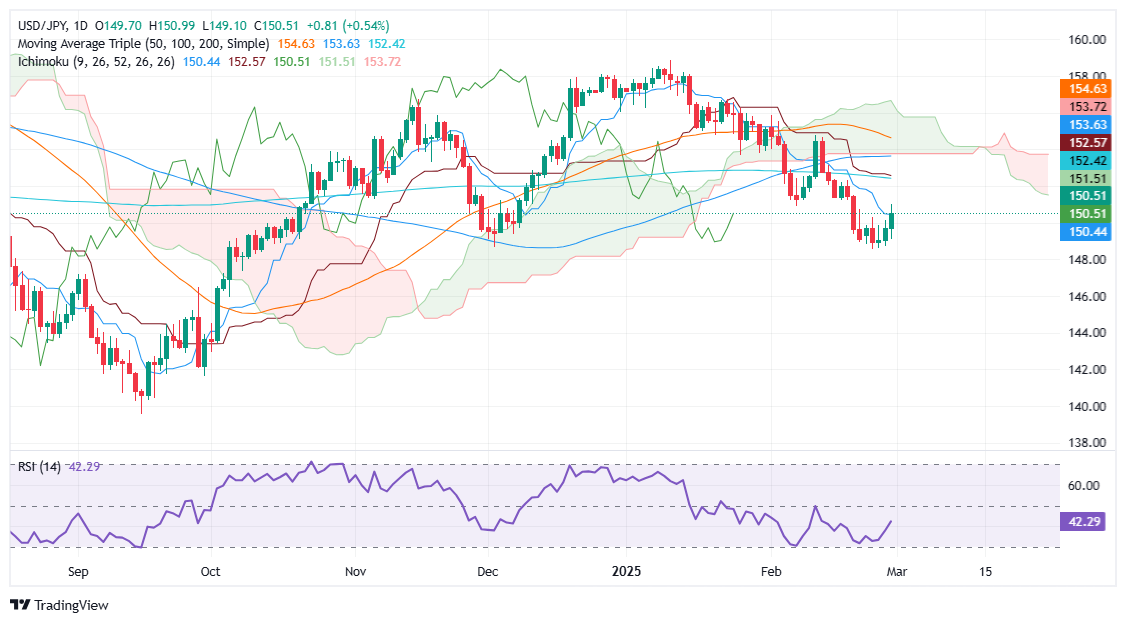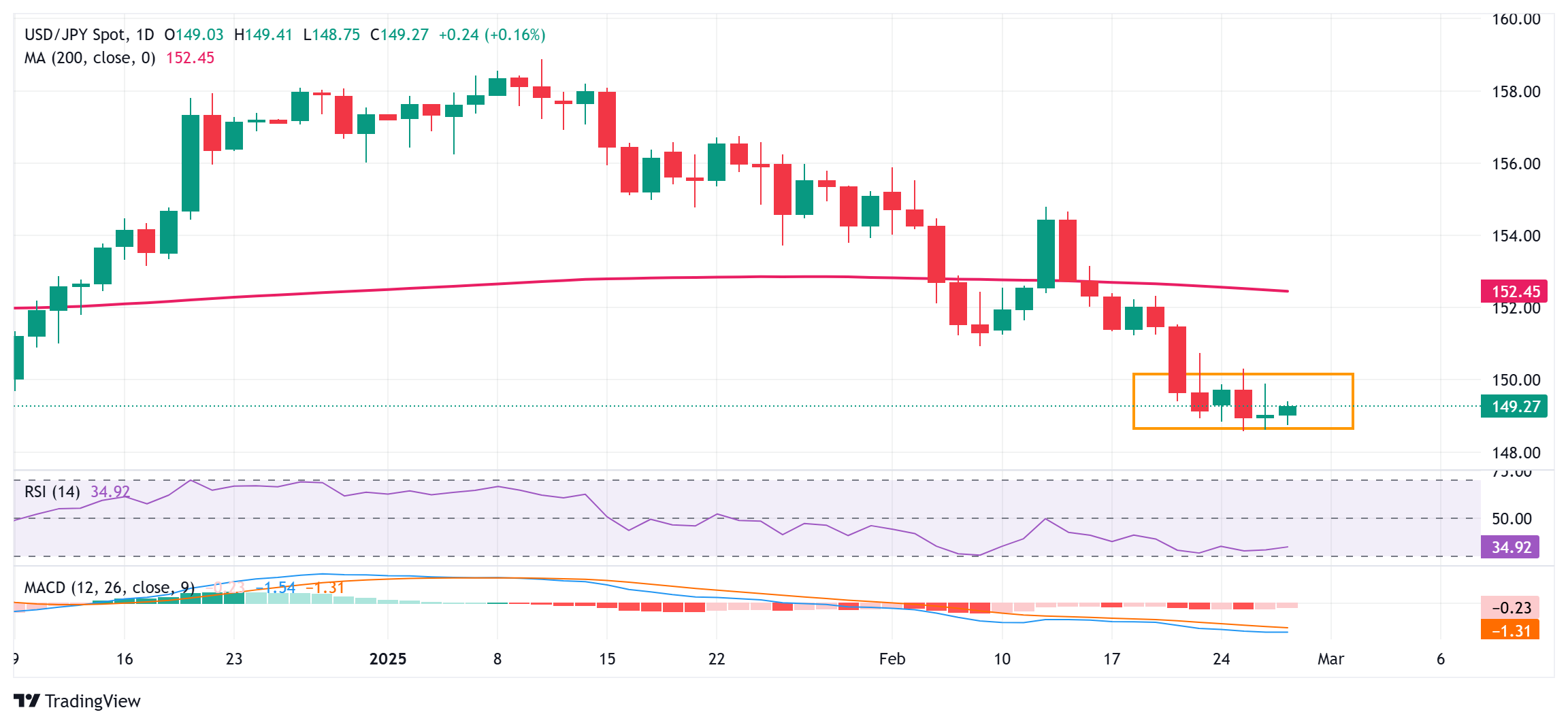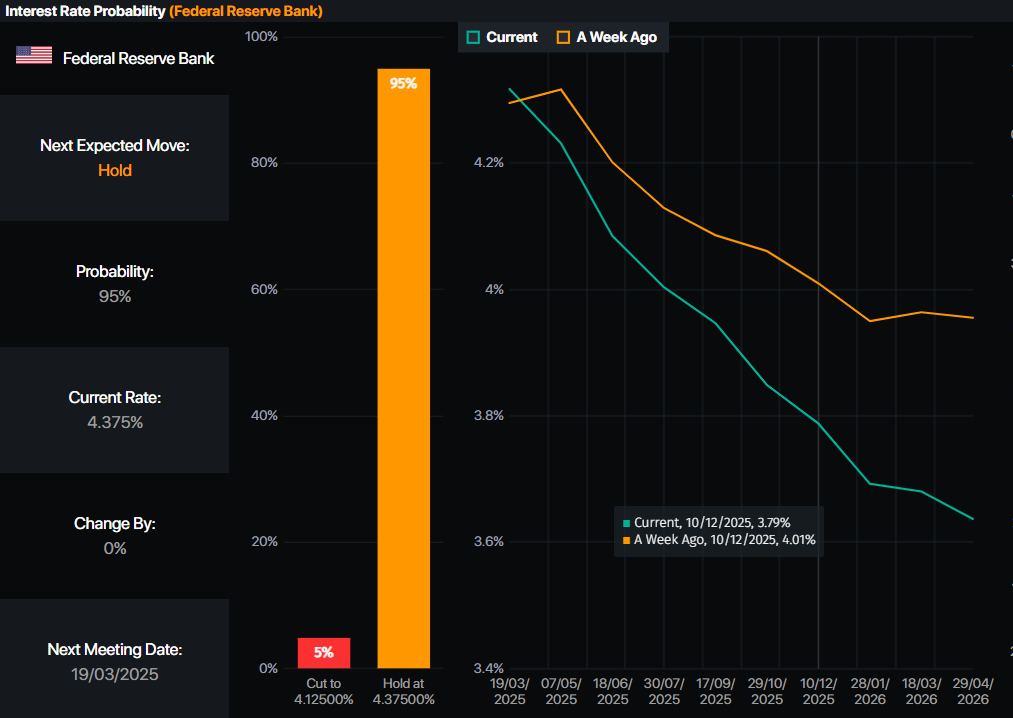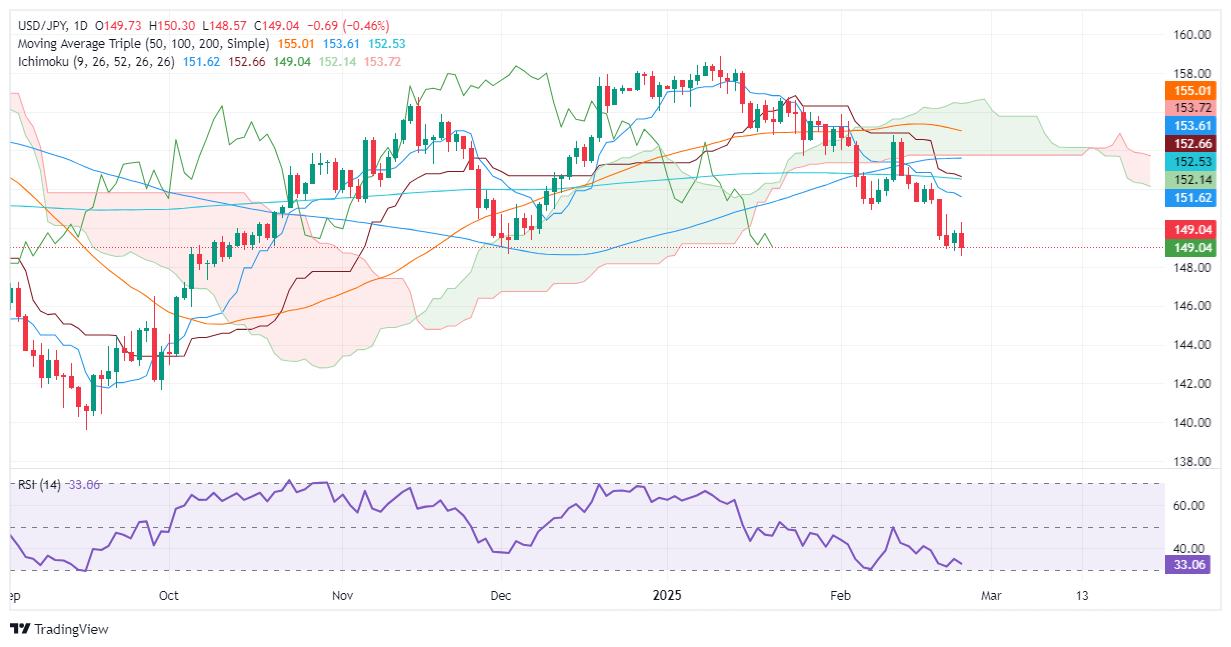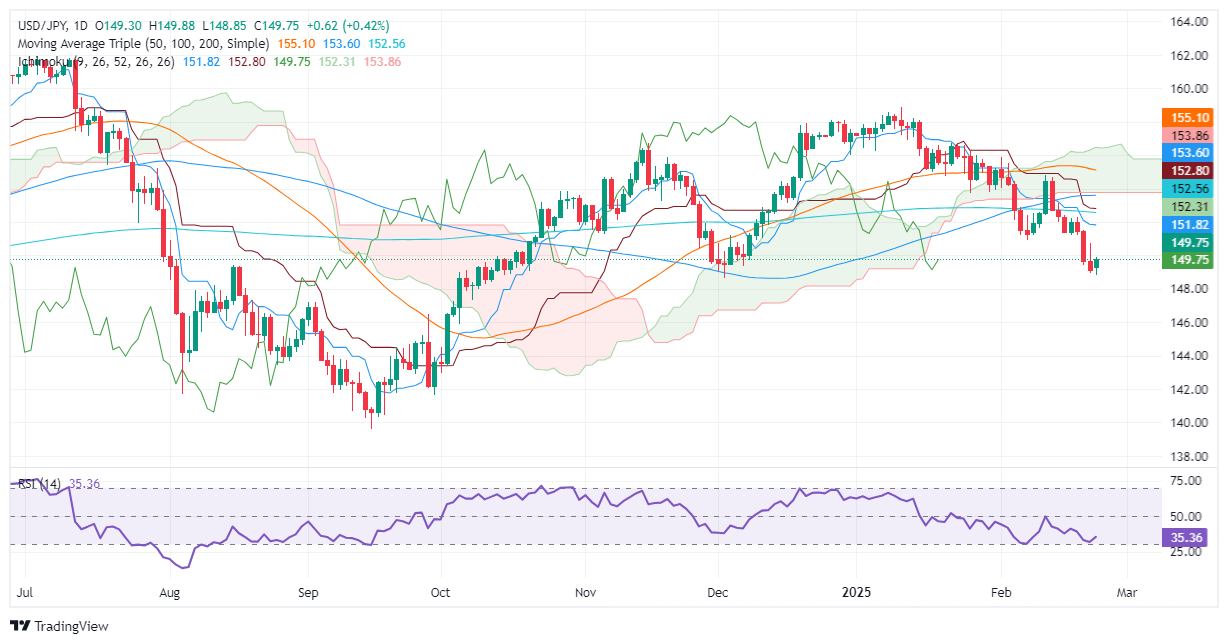- Analytics
- News and Tools
- Quotes
- Chart and quotes for USDJPY
CFD Trading Rate US Dollar vs Japanese Yen (USDJPY)
| Date | Rate | Change |
|---|
Related news
-
04.03.2025 09:21USD/JPY: Short bias on the day – OCBC
USD/JPY fell below 149-levels this morning amid sharp pullback in UST yields. Pair was last at 148.98, OCBC's FX analysts Frances Cheung and Christopher Wong note.
"Trump’s tariffs on Canada, Mexico and China come into effect today, undermining risk sentiments while softer US data reinforces the view that Fed cut cycle can still continue. On JPY side of the equation, BoJ has room to further pursue policy normalisation given wage growth prospects and broadening services inflation. Put together, growing Fed-BoJ policy divergence should continue to drive USD/JPY to the downside."
Bias to sell rallies in USD/JPY
Daily momentum is flat while RSI fell. Bias remains to sell rallies. Support here at 149.20 (50% fibo), 148.80 before 147 (61.8% fibo). Resistance at 150.50, 151.50 (38.2% fibo retracement of Sep low to Jan high).
"That said, we continue to see a confluence of risk factors, including Trump’s tariff threats (reciprocal tariffs) and dividend seasonality trends that may pose intermittent upside pressure for USDJPY. We maintain bias to sell rallies in USD/JPY should there be a bounce driven by tariff uncertainty or seasonality trends."
-
04.03.2025 02:33Japanese Yen strengthens further; USD/JPY seems vulnerable near 149.00
-
03.03.2025 23:09USD/JPY Price Forecast: Struggles on weak US data, tariff woes
-
03.03.2025 11:16USD/JPY advance to test 151.20 – UOB Group
-
03.03.2025 11:00USD/JPY: Bias to sell rallies in USD/JPY – OCBC
-
28.02.2025 22:28USD/JPY Price Forecast: Rallies and reclaims 150.00, bulls eye key resistance
-
28.02.2025 11:08USD/JPY: Downward momentum is slowing – UOB Group
-
27.02.2025 10:38USD/JPY: Weakness has not stabilised – UOB Group
-
27.02.2025 09:27USD/JPY: Await tokyo CPI – OCBC
-
27.02.2025 02:30Japanese Yen weakens amid sliding JGB yields; USD/JPY moves closer to mid-149.00s
-
26.02.2025 10:58USD/JPY: Inability to overcome 152.50 can lead to continuation in decline – BBH
-
26.02.2025 10:32USD/JPY has a chance to retest the 148.55 level – UOB Group
-
26.02.2025 08:35USD/JPY drops below 149 and has further to go – Danske Bank
-
26.02.2025 08:31USD/JPY advances to near 149.50, upside seems limited amid hawkish BoJ
-
26.02.2025 02:21USD/JPY recovers above 149.00 on modest US Dollar strength
-
25.02.2025 21:12USD/JPY drops as weak US data fuels rate cut bets, Yen strengthens
-
25.02.2025 14:46USD/JPY turns upside down as US Dollar slumps
-
25.02.2025 10:40USD/JPY: Has a chance to rebound further – UOB Group
-
25.02.2025 10:27USD/JPY: Bias to sell rallies – OCBC
-
24.02.2025 21:13USD/JPY Price Forecast: Rebounds from yearly lows, bulls' eye 150.00
© 2000-2025. All rights reserved.
This site is managed by Teletrade D.J. LLC 2351 LLC 2022 (Euro House, Richmond Hill Road, Kingstown, VC0100, St. Vincent and the Grenadines).
The information on this website is for informational purposes only and does not constitute any investment advice.
The company does not serve or provide services to customers who are residents of the US, Canada, Iran, The Democratic People's Republic of Korea, Yemen and FATF blacklisted countries.
Making transactions on financial markets with marginal financial instruments opens up wide possibilities and allows investors who are willing to take risks to earn high profits, carrying a potentially high risk of losses at the same time. Therefore you should responsibly approach the issue of choosing the appropriate investment strategy, taking the available resources into account, before starting trading.
Use of the information: full or partial use of materials from this website must always be referenced to TeleTrade as the source of information. Use of the materials on the Internet must be accompanied by a hyperlink to teletrade.org. Automatic import of materials and information from this website is prohibited.
Please contact our PR department if you have any questions or need assistance at pr@teletrade.global.
